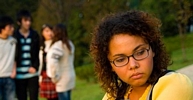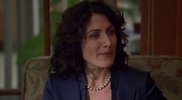Two worlds come together
Homeopuncture is a new treatment strategy slowly coming into vogue in integrative medical clinics around the world which combines two alternative medical therapies, Acupuncture and Homeopathy into one. Each of these age old therapies predate conventional medicine by a long shot and are used around the world to treat everything from the most simple to the most complex health challenges. Both also have growing bodies of research proving their effectiveness in treating a large variety of illnesses, acute as well as chronic. This in spite of the large challenges that alternative medicine has to face in the research arena which includes lack of funding, and the relative complexity in designing research studies to study these modalities. This compared to the relatively simple process of studying single drugs for a single symptoms as is done on a large scale in conventional medicine.
Homeopathy
This form of medicine has been around for over 200 years and is based on the basic principle which is that “like cures like” also know as the “law of similars”. In other words a substance that would cause specific symptoms when taken in its raw form, will alleviate those same symptoms if the compound is diluted and succussed. Through a series dilutions and succusions the remedy is “potentized” to a level at which it is capable of reversing these symptoms even if the symptoms are not caused by the substance but in stead are related to an illness.
Homeopathy was founded by a German physician Dr. Samuel Hahnemann ( 1755 – 1843 ) who began practicing as a doctor in 1781 and interestingly enough stopped practicing medicine shortly after he got married because the medicine of his day he felt caused more harm than good.
In his own words: “My sense of duty would not easily allow me to treat the unknown pathological state of my suffering brethren with these unknown medicines. The thought of becoming in this way a murderer or malefactor towards the life of my fellow human beings was most terrible to me, so terrible and disturbing that I wholly gave up my practice in the first years of my married life and occupied myself solely with chemistry and writing.”
After a few years in self imposed exile from medicine he made an interesting discovery that he could reverse the toxic effects of a substance like Cinchona, the bark of a peruvian tree, which causes symptoms exactly like that of malaria, by taking a diluted and potentized version of it. This became the first homeopathic remedy. He also discovered subsequently that he could do exactly the same with other toxic substances. What is most fascinating as that he did the first experiments on himself with his wife standing at the ready with the antidote. These experiments were called provings. Dr. Hahnemann was the one who coined the term homeopathy and wrote the first textbooks on homeopathy called the “Materia Medica”
The biggest difference between homeopathy and conventional medicine is that rather than focusing on symptoms of disease and their treatment with synthetic medicines or the treatment of disease causing organisms, homeopathy works to eliminate the imbalance that allows for symptoms of disease to develop or for disease causing organisms to proliferate.
Acupuncture
Acupuncture in the West is often thought of as a new form of alterative medicine but in reality it is over 5,000 years old and originated in China. Very basically, Acupuncture is the insertion of very fine needles, (sometimes in conjunction with electrical stimulus), on the body's surface, in order to influence physiological functioning of the body. The ancient Chinese believed that there is a universal life energy called Chi or Qi present in every living creature. This energy is said to circulate throughout the body along specific pathways that are called meridians. As long as this energy flows freely throughout the meridians, health is maintained, but once the flow of energy is blocked, the system is disrupted and pain and illness occur. Acupuncture works to “re-program” and restore normal functions by stimulating certain points on the meridians in order to free up the Chi energy. In other words it helps to restore balance between the Yin and Yang energies.
There are fourteen main meridians running vertically up and down the surface of the body. There are six organ Meridians in each half of the body (12 total) and two unpaired midline Meridians. The acupuncture points are specific locations where the Meridians come to the surface of the skin, and are easily accessible by "needling," Moxibustion, Acupressure or Homeopuncture. The connections between them ensure that there is even circulation of Qi throughout the body and a balance between Yin and Yang. Qi is comprised of two parts, Yin and Yang. Yin and Yang are opposite forces, that when balanced, work together to optimize health.
Other modalities used in conjunction with Acupuncture
Acupuncturists employ different needle insertion techniques and different types of needles to stimulate specific acupuncture points selected based on the ailments or symptoms that a patient presents with. There are also related procedures that are used in conjunction with acupuncture to enhance the effect: for example electro-acupuncture where very small electric impulses are applies through acupuncture needles or directly to the acupuncture points without needles. A laser can be used in a similar way which may obviate the need for needle insertion but may be a little weaker than needling or electroacupuncture.
Auriculotherapy or Ear Acupuncture has become very popular in the U.S. and is often used in place of regular acupuncture points on the rest of the body. The ear is very rich in nerve endings and almost the entire body is represented through acupuncture points on the ear. Auricular Acupuncture has been successfully used in treating problems ranging from chronic pain just about anywhere in the body to obesity to smoking cessation and drug and alcohol abuse.
There are numerous studies done both in the U.S. and abroad that show that acupuncture and auriculotherapy are both effective in the treatment of numerous ailments and symptoms. Some of the best studies were done on chronic pain conditions such as chronic low back pain, carpal tunnel syndrome, and headaches; as well as on other common symptoms like nausea associated with chemotherapy. There also currently a whole slew of other studies on acupuncture that are currently under way which will shed further light on its efficacy.
Homeopathy and Acupuncture
Both modalities of treatment can be combined and delivered in their original form to complement each other by practitioners trained in both arts.
Homeosiniatry
Homeopaths Weihe (of German descent) and Goehrum discovered that when certain diseases were cured by a homeopathic remedy, a point in the body that grew tender with pressure was relieved. During his research, Weihe was able to locate approximately 197 points. He also linked these points with particular homeopathic remedies which were prescribed for a specific disorder. He was able to use the points to confirm the correct remedy to prescribe when in doubt. This was known as Homeosiniatry. Strangely enough, these tender points are also described in TCM as Alarm points and As-shi points. Alarm points represent organs in the body. If there is a disorder in the organ's related energy channel, the respective alarm point will become tender.
Homeopuncture
Subsequently, a famous French author and acupuncturist, Roger de la Fuye (French Homeopath and Acupuncturist) researched and concluded that homeopathy can be used with acupuncture to treat patients. He was also able to utilize the points to confirm if the remedy was the proper one.
Considering the effectiveness of each therapy, it is fair to say that combining these two therapies could be very fruitful.
Homeopuncture in Practice
Using homeopathy with acupuncture has brought about a union of the knowledge between the healing methods of acupuncture and homeopathy. Both treatment methodologies have shown their value in treating many disorders, and so in combination they can make possible even greater feats.
If an acupuncturist were to say "why bother… acupuncture can do anything", this would only indicate ideological rigidity, and they would have failed to see that the idea of any treatment is to heal the patient as soon as possible and as effectively as possible. In combining the knowledge of the two systems, we become equipped to have a better understanding about the patient and the illness. This enables practitioners to treat patients more efficiently.
Clinical Homeopuncture
In recent years, the combination of acupuncture and homeopathy has revealed success in treating conditions that range from alopecia areata (hair loss) and skin disorders, such as leucoderma (Vitiligo) and psoriasis, to arthritis and many other conditions.
The Procedure
The needles are immersed in a liquid homeopathy remedy. The acupuncturist uses normal needling, or non-retention needling (in disorders that cover a greater area), on the affected area (in Chinese 'Ashi points'). 'Non-retention needling' is the use of acupuncture needles to puncture the skin and then removing it, instead of letting the needle remain in the skin as it normally would be. This is continued until the affected area has been completely pricked with the needle. After every one or two pricks, the homeopath lubricates the needle tip before puncturing the skin again. This might sound very painful, but in fact if you go to an experienced acupuncturist you will experience no pain or minimal discomfort, depending on the location being needled.
Advantages
1.Nil or Minimal Aggravation
Since acupuncture has a homeostatic quality, if there is any aggravation that occurs with homeopathy, it is completely exhausted or brought to a minimum;
2.On Remedies
Some remedies might case side-effects because it is not the similimum. Even though this is the case, for homeopuncture one may choose to use a remedy that has a direct influence on the disorder, and focuses only on the disorder. Since both treatment protocols are natural, and treat the body as a whole, it may be a good idea to divide the forces. For example, a homeopathic remedy can be prescribed for the disease only, coupled with acupuncture using the regular points for the disorder (with Du20 BaiHui). The result, on many occasions, is that there are no aggravations;
3.The Remedy Remains Pure
As the remedy is directly inserted into certain areas of the body, there is a smaller chance of contamination then when given orally;
4.On Potencies
Combinations of potencies can be used, by having one potency for the homeopuncture, where the remedy reaches the patient via the needle, and another in the traditional homeopathic manner. Why? Because the homeopuncture remedy will act, for example, in Leucoderma; instead of using the similimum you may choose Sepia 6c or 12c with the needles and give the similimum in the oral form.



